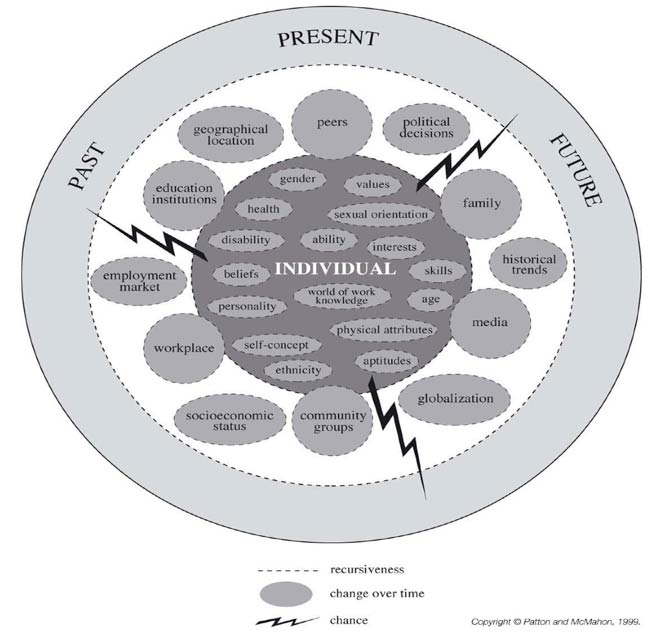science

How well do you know your friends? (…)
There are lots of ways to know someone’s personality. You can say “she’s an extrovert” or “she’s usually happy.” You may also know how he or she reacts to different situations and other people’s behavior. “It’s a more detailed way of understanding personality,” says Charity A. Friesen, a graduate student at Wilfrid Laurier University, who co-wrote a new paper with Lara K. Kammrath.
“You might know the person is extroverted when they’re out with their friends but more introverted when they’re in a new situation.” When a person is faced with one of a list of situations, then how does he or she behave? Friesen identifies this as an “if-then profile.” (…)
Some people knew their friends’ triggers well; others had almost no idea what set their friends off. And that made a difference to the friendship. People who had more knowledge of their friend’s if-then profile of triggers had better relationships. They had less conflict with the friend and less frustration with the relationship.
{ APS | Continue reading }
psychology, relationships | March 25th, 2011 7:26 pm

Researchers looked at the role tomato products play in health and disease risk reduction. Results indicate that eating more tomatoes and tomato products can make people healthier and decrease the risk of conditions such as cancer, osteoporosis and cardiovascular disease.
{ SAGE Insight | Continue reading }
food, drinks, restaurants, health, science | March 25th, 2011 7:05 pm

Humans are known to have the largest and most visible sclera – the “whites” of the eyes – of any species. This fact intrigues scientists, because it would seem actually to be a considerable hindrance: imagine, for example, the classic war movie scene where the soldier dresses in camouflage and smears his face with green and brown pigment – but can do nothing about this conspicuously white sclera, beaming bright against the jungle.
There must be some reasons humans developed it, despite its obvious costs. In fact, the advantage of visible sclera – so goes the “cooperative eye hypothesis” – is precisely that it enables humans to see clearly, and from a distance, which direction other humans are looking.
Chimpanzees, gorillas, and bonobos – our nearest cousins – follow the direction of each other’s heads, whereas human infants follow the direction of each other’s eyes.
{ Brian Christian, The Most Human Human | via Overcoming Bias | Continue reading }
photo { Salvador Dali by Richard Avedon, 1963 }
eyes, science | March 23rd, 2011 6:26 pm

Despite wide acceptance of the stereotype that women apologize more readily than men, there is little systematic evidence to support this stereotype or its supposed bases (e.g., men’s fragile egos). We designed two studies to examine whether gender differences in apology behavior exist and, if so, why. (…)
Findings suggest that men apologize less frequently than women because they have a higher threshold for what constitutes offensive behavior.
{ Psychological Science/SAGE | Continue reading }
psychology, relationships | March 23rd, 2011 5:06 pm

Our problem with public cell phone conversations has nothing to do with how cool he thinks he is, or even his stupid voice. It’s all in our heads.
Science has proven that hearing half a conversation, as you’re forced to do when close to a cell phone user, is inherently more distracting to the human brain. In one experiment, people were asked to try to concentrate on a task in total silence, and then while overhearing two people conversing with each other. They performed equally well both times. But when half a conversation was played, performances dropped dramatically.
{ 6 Things That Annoy You Every Day (Explained by Science) | Cracked | Continue reading }
psychology, technology | March 23rd, 2011 4:35 pm

Why is it that some of us can’t live without an iPod perpetually connected to our ears while others couldn’t care less about music?
Our love of listening to tunes may be influenced by whether or not we carry a particular gene.
Researchers have discovered that a gene with the snappy name arginine vasopressin receptor 1A (AVPR1A), is found more frequently in people who relish a good toe-tapper. (…)
Studies have also found genetic traits associated with being tone deaf. Other genes have been found to relate to absolute pitch, aka “perfect pitch” (being able to name a certain note just by hearing it).
{ Elements Science | Continue reading }
genes, music | March 23rd, 2011 4:10 pm

One the big questions that trouble cosmologists and particle physicists is the distribution of matter and antimatter in the Universe. It certainly looks as if matter dominates the cosmos but looks can be deceiving. We may just live in a corner of the universe that happens to be dominated by matter.
Today, we find there’s a little extra antimatter in our corner thanks to the work of the STAR collaboration at the Relativistic Heavy Ion Collider at Brookhaven National Laboratory in the US.
These guys banged together 10^9 gold nuclei at energies of 200 GeV and spotted 18 antinuclei of helium-4 in the ensuing wreckage. That’s an impressive achievement by an standards–at the very least we now know antihelium-4 can exist.
{ The Physics arXiv Blog | Continue reading }
photo { Edward Weston }
science, space | March 22nd, 2011 7:14 pm

When we hear the word “universe,” we think that means everything: every star, every galaxy, everything that exists. But in physics, we’ve come upon the possibility that what we’ve long thought to be everything may actually only be a small part of something that is much, much bigger. The word “multiverse” refers to that bigger expanse, the new totality of reality, and our universe would be just a piece of that larger whole.
Scientists have many proposals. In some, the other universes have the same laws of physics and the same particles making up matter. So except perhaps for some environmental differences, pretty much what we see here is what happens there. In some multiverse proposals, the other universes could be radically different from what we know, the particles could be different, the laws of physics could appear different. And in others—ones that frankly don’t compel me—even the kinds of mathematics that govern the physics in those realms might be different from the math that we are familiar with.
{ Research/Columbia University | Continue reading }
image { Mars and Beyond, Disney, 1957 }
ideas, space | March 22nd, 2011 7:07 pm

Mashed potatoes, macaroni and cheese, meatloaf…they may be bad for your arteries, but according to an upcoming study, they’re good for your heart and emotions. The study focuses on “comfort food” and how it makes people feel. (…)
In another experiment, eating chicken soup in the lab made people think more about relationships, but only if they considered chicken soup to be a comfort food—a question they’d been asked long before the experiment, along with many other questions, so they wouldn’t remember it.
{ APS | Continue reading }
food, drinks, restaurants, psychology | March 21st, 2011 4:50 pm

An emerging body of research is suggesting that spending time alone, if done right, can be good for us — that certain tasks and thought processes are best carried out without anyone else around, and that even the most socially motivated among us should regularly be taking time to ourselves if we want to have fully developed personalities, and be capable of focus and creative thinking.
There is even research to suggest that blocking off enough alone time is an important component of a well-functioning social life — that if we want to get the most out of the time we spend with people, we should make sure we’re spending enough of it away from them.
{ The Boston Globe | Continue reading }
photo { Helmut Newton }
ideas, psychology | March 21st, 2011 4:46 pm

Humans are asymmetric animals. Early in our embryonic development, the heart turns to the left. The liver develops on the right. The left and right lungs have distinct structure. (…)
When it comes to handedness, another basic human asymmetry, which reflects the structure and function of the brain, the reversed pattern is relatively common, and for all that, not easily understood. (…)
The riddle of what underlies handedness remains. Its proportions — roughly 90 percent of people are right-handed and 10 percent left-handed — stay consistent over time.
Hand dominance (whether left or right) is related to brain asymmetry. And that, Dr. Francks said, “is not at all understood; we’re really at the very beginning of understanding what makes the brain asymmetrical.”
Though brain asymmetries exist in our closest primate relatives, there seems to be general consensus that the human brain is more profoundly asymmetric, and that understanding that asymmetry will show us much about who we are and how our brains work.
{ NY Times | Continue reading }
brain, science | March 21st, 2011 4:44 pm

The first day of spring arrives on varying dates (from March 19-21) in different years for two reasons: Our year is not exactly an even number of days; and Earth’s slightly noncircular orbit, plus the gravitational tug of the other planets, constantly changes our planet’s orientation to the sun from year to year.
This year, spring started Sunday, March 20, at 7:21 p.m. EDT (23:21 UTC). That’s when the so-called vernal equinox occurs.
{ LiveScience | Continue reading }
climate, science | March 21st, 2011 3:46 pm
relationships, science | March 21st, 2011 3:42 pm
books, haha, mathematics | March 21st, 2011 11:54 am
Linguistics, science | March 20th, 2011 12:47 pm

A deterministic universe [is one] in which “Every decision is completely caused by what happened before the decision—given the past, each decision has to happen the way that it does.” After being presented with this description of determinism, one group of participants was asked whether it is possible for anyone to be morally responsible for their actions in such a universe. These participants tended to say that it is not possible to be morally responsible in that universe. That question about moral responsibility is, of course, pitched at an abstract level.
Another group of participants was presented instead with a concrete case of a man who killed his family. That provoked a much different response. People tended to say that the man was fully morally responsible for his actions.
People are pulled in different directions because different mental mechanisms are implicated in different conditions.
{ Science | via Overcoming Bias | Continue reading }
photo { Lauren Edwards }
ideas, psychology | March 18th, 2011 4:25 pm

Over the last few decades many Buddhists and quite a few neuroscientists have examined Buddhism and neuroscience, with both groups reporting overlap. (…)
Neuroscience tells us the thing we take as our unified mind is an illusion, that our mind is not unified and can barely be said to “exist” at all. Our feeling of unity and control is a post-hoc confabulation and is easily fractured into separate parts. As revealed by scientific inquiry, what we call a mind (or a self, or a soul) is actually something that changes so much and is so uncertain that our pre-scientific language struggles to find meaning.
Buddhists say pretty much the same thing. They believe in an impermanent and illusory self made of shifting parts. They’ve even come up with language to address the problem between perception and belief. Their word for self is anatta, which is usually translated as ‘non self.’ One might try to refer to the self, but the word cleverly reminds one’s self that there is no such thing.
{ Seed | Continue reading }
photo { Edward Weston }
ideas, neurosciences | March 18th, 2011 3:40 pm

{ No one knows exactly why the international prototype of the kilogram, as pampered a hunk of platinum and iridium as ever existed, appears to weigh less than it did when it was manufactured in the late 19th century. The kilogram — the universal standard against which all other kilograms are measured — in Sèvres, France, in controlled conditions set out in 1889, in an underground vault that can be opened only with three different keys possessed by three different people. The kilogram is the last base unit of measurement to be expressed in terms of a manufactured artifact. (Its cousin, the international prototype of the meter, was retired from active duty in 1960, when scientists redefined the meter. | NY Times | full story }
science | March 17th, 2011 1:00 pm

Dr Principe wants to rehabilitate alchemy. He believes that most alchemists were respectable seekers after knowledge and that they were working with well constructed (if ultimately misguided) theories. The reputation of the alchemists, he reckons, was deliberately undermined by gentleman amateurs who were trying to give the emerging science of chemistry the social respectability it needed to sit at the academic high table.
The work of Dr Principe, though, also serves as a useful reminder to modern scientists that even the most cherished theories need to be treated with constant scepticism. This is because, as the alchemists found out, it can be all too easy to see in your results what you want to see, rather than what is actually there.
Alchemy’s roots lie in Hellenistic Egypt. It was compounded from a mixture of practical knowledge of things like metallurgy, pharmacy and glassmaking with the Greek practice of analysing and theorising about the world that is known as philosophy. These Hermetic ideas (Hermes was the legendary founder of alchemy) were picked up and developed by Arab scholars when Egypt fell to the armies of Islam in the seventh century, and then transmitted to Europe during the scholastic renaissance of the 12th century.
For the next five centuries, Dr Principe thinks, alchemists were the “northern chemists” of Europe.
{ Economist | Continue reading }
flashback, science | March 17th, 2011 1:00 pm

Molecular surprises are sometimes right in front of us, if only we’d do the math.
Some new molecules are simply astounding. We have learned that xenon, a so-called noble gas, is far from inert, forming bonds with halogens, oxygen and carbon. But I never imagined a bond between two relatively unreactive elements, gold (Au) and xenon (Xe), and, to boot, with a pretty naked xenon acting as a ligand—which is usually an ion or a molecule that binds to a central metal atom by donating one of its electron pairs. But that’s what Stefan Seidel and Konrad Seppelt of the Free University of Berlin made in 2000 in the square-planar AuXe42+ ion.
{ American Scientist | Continue reading }
installation { Phoebe Washburn }
science | March 17th, 2011 12:07 pm























